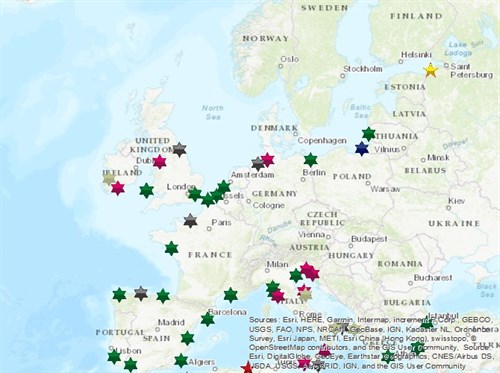Asian energy giants hedge U.S. LNG buying spree with European deals
LONDON, (Reuters) - Asian utilities are increasingly striking up European partnerships and hunting for acquisitions to hedge their large multi-billion-dollar purchases of U.S. liquefied natural gas (LNG) supplies.
 |
| SOURCE: EWA |
In the latest example, Japan’s JERA, the world’s largest buyer of liquefied gas, will absorb the LNG trading desk of France’s EDF Trading (EDFT) to gain wholesale access to European gas markets and sharpen its trading edge.
Such deals, also struck lately by Tokyo Gas and Kogas, give Asian giants a fallback market for U.S. LNG supplies which they may not need, having rushed to commit to big chunks of new liquefaction capacity offered there in the past six years.
JERA’s takeover of EDFT’s LNG trading desk allows it to share EDF’s access to 15 LNG terminals in Europe, just as shale gas producers on the U.S. East Coast ramp up LNG exports.
The United States has sold more than 40 percent of its projected 69 million tonnes/year output from five planned LNG plants, in operation or under-construction, to Asia, the bulk of which will go to Japan and South Korea.
Asia’s thirst for U.S. LNG deals stems from its desire to strike relatively flexible contracts with new producers and wean itself off costly oil-linked supplies from Qatar and other regions at a time of spiking demand.
But, while Korea and Japan will remain top consumers, the rise of alternative fuels and, in Japan’s case, the potential restart of its nuclear reactor fleet may put a brake on demand growth there.
“The level of over-contracted LNG to the early 2020s perhaps explains the emphasis Japan has placed in pushing for destination flexibility on contracted LNG,” said Howard Rogers, senior research fellow at the Oxford Institute of Energy Studies.
“The development of an LNG trading portfolio which allows contracted volumes to be marketed in either Europe or Asian arenas would clearly help Japan optimise its LNG position.”
JERA’s access to European terminals will allow it to sell U.S. LNG to the continent, which consumes 550 billion cubic metres (bcm) of natural gas a year and is increasingly seen as a swing consumer of LNG, easily accessible from new U.S. or African production hubs.
ESCAPING OIL-INDEXATION
The U.S. shale revolution presented an opportunity for gas-hungry Asian consumers, especially for Japan after the Fukushima nuclear disaster shut down its reactor fleet and soaring costs of oil-linked LNG brought on a record trade deficit.
Stung by the gas import bill, Japanese utilities scrambled to sign 20-year LNG import deals from U.S. East Coast developers needing investment to underpin their export projects.
The appeal was that the U.S. producers did away with oil-indexation at a time when oil traded at record highs and allowed buyers to divert shipments at will.
But as the shopping spree wound down Japanese utilities realised they may have over-bought. Government policy shifts, such as support for renewable fuels and market liberalisation, threatened to undercut their share and dampen LNG demand.
Japan’s gas-for-power consumption is expected to fall 17 percent by 2023 to 100 bcm a year, the International Energy Agency says, as its nuclear fleet comes back on stream and its renewable fuels sector grows by 5 percent annually.
What Asian utilities have a desperate need for is something European players have in abundance. Namely, import rights into LNG terminals dotted across the continent’s shores, which for EDF includes terminals in France and Belgium.
As a result, Tokyo Gas did a deal with Britain’s Centrica last month to share the purchase of LNG from a new project in Mozambique, and JERA joined Centrica in 2016 to optimise the delivery of six LNG cargos a year as of 2019.
Korea Gas Corp began handing over 4 million tonnes of LNG to EDFT last year under a deal struck in 2015.

- ExxonMobil halts 1-Bft3d blue hydrogen project in Texas
- Aramco and Yokogawa commission multiple autonomous control AI agents at Fadhili gas plant
- Ukraine will resume gas imports via Transbalkan route in November
- Mitsubishi to inject $260 MM into Brunei LNG project
- Freeport LNG (U.S.) on track to take in more natgas on Thursday after unit outage



Comments